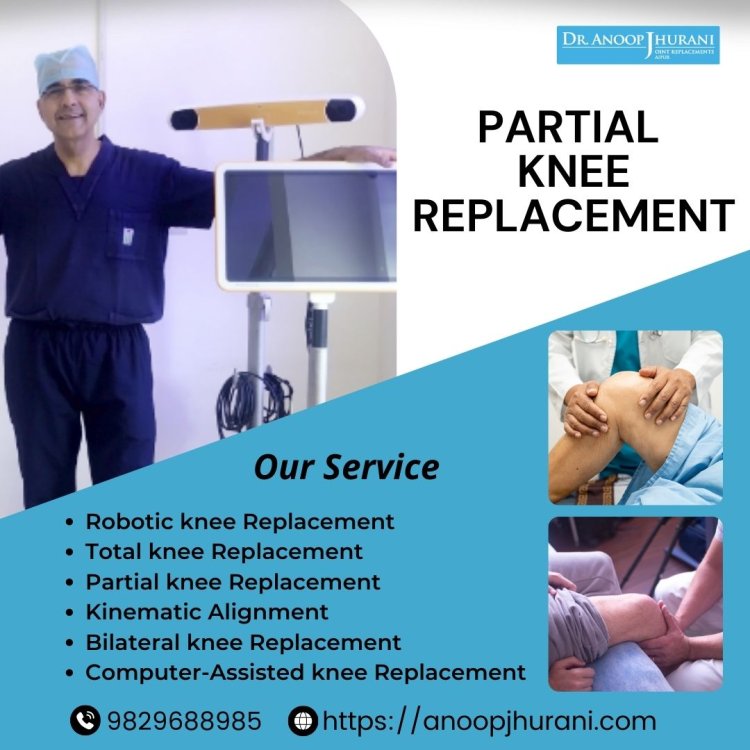Partial Knee Replacement: Procedure and Functionality Explained
Dr. Jhurani is the best partial knee replacement in Jaipur. Partial knee replacement surgery can replace the only broken section of a knee.
Share this Post to earn Money ( Upto ₹100 per 1000 Views )

Partial knee replacement is a surgical procedure used to treat advanced knee arthritis that affects only one compartment of the knee joint. Unlike total knee replacement, which involves replacing the entire knee joint, a partial knee replacement involves replacing only the damaged part of the knee with an artificial implant. This procedure offers several advantages, including a quicker recovery and more natural knee function.
1. Evaluation and Patient Selection: Before recommending a partial knee replacement, orthopedic surgeons conduct a thorough evaluation of the patient's medical history, physical examination, and imaging studies (X-rays, MRI, etc.). They determine if the damage is limited to one compartment of the knee and if the patient is a suitable candidate for the procedure based on various factors such as age, activity level, and overall health.
2. Anesthesia and Incision: Partial knee replacement can be performed under general or spinal anesthesia, depending on the patient's condition and the surgeon's preference. Once the anesthesia takes effect, the surgeon makes a small incision over the knee to access the affected compartment.
3. Resurfacing the Damaged Compartment: The surgeon carefully removes the damaged cartilage and bone from the affected compartment, leaving the healthy bone intact. This preserves the other knee compartments, which is one of the significant advantages of partial knee replacement.
4. Implant Placement: The surgeon then inserts an artificial implant made of metal and plastic components. These components are designed to replicate the natural shape and function of the knee joint. The implant is secured to the bone using special cement or, in some cases, press-fit without cement.
5. Adjustments and Testing: With the implant in place, the surgeon checks the knee's range of motion and performs several tests to ensure the proper alignment and functionality of the new joint. This step is crucial to ensure stability, optimal movement, and longevity of the implant.
6. Closure: Once the implant is successfully placed and tested, the surgeon closes the incision with stitches or staples and dresses the wound.
How Does a Partial Knee Replacement Work?
A partial knee replacement works by resurfacing the damaged compartment of the knee joint while preserving the healthy parts. This approach allows for more natural knee movement and faster recovery compared to total knee replacement. The artificial implant acts as a replacement for the damaged cartilage and bone, providing a smooth surface for the joint to move on.
Benefits of Partial Knee Replacement:
· Smaller incisions and reduced surgical trauma
· Faster recovery and rehabilitation
· More natural knee function and range of motion
· Preservation of healthy bone and tissue in the knee
· There is a lower risk of complications compared to total knee replacement
Conclusion:s
Partial knee replacement is a viable option for patients with limited knee arthritis, offering a quicker recovery and preserving the healthy parts of the knee. By understanding the procedure and how it works, patients can make informed decisions about their treatment options with the guidance of Dr. Anoop Jhurani orthopedic surgeon. If you believe you may benefit from a partial knee replacement, consult with an orthopedic specialist to discuss your individual case and explore the best treatment plan for you.















